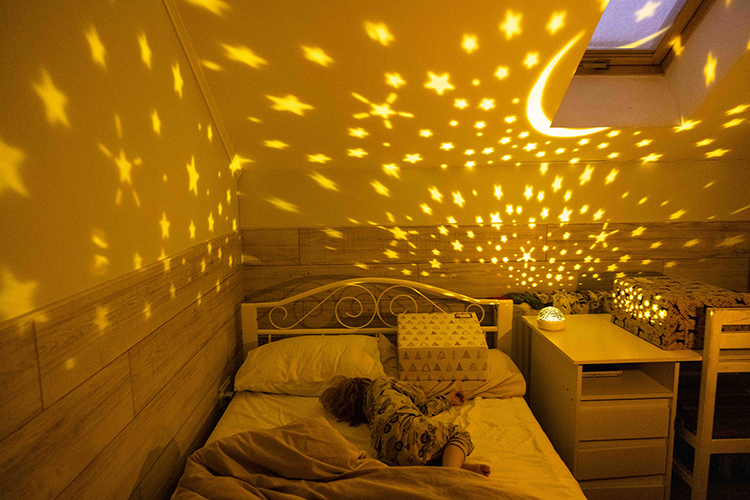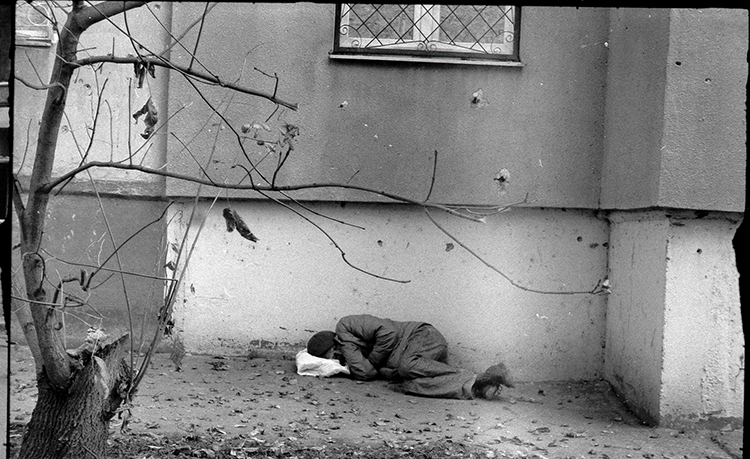This photograph by Kostyantyn Liberov was taken in the Serebryansky Forest. “Winter on the front line” is the simple caption the photographer has given to this image and the entire series. The enemy positions are no more than fifty meters from the Serebryansky Forest. This is also mentioned in the caption. But even without it, I can sense the proximity of the enemy. Because I see a mortar. I see it at the moment when a mine is pushed out of the barrel. At the moment when the body of the plate transmits the impulse of the rebound to the ground. At the moment when the snow rises upward, eerily resembling a glass ball with artificial snow that has just been shaken. My gaze passes over this snowy flicker and I see that the mortar is small and aimed at an almost vertical trajectory. So the enemy positions are no more than fifty meters away. I know this because I know what mortars are. I know what they look like. I know that they are rapid-fire, lightweight, and easy to use. I know the power of the shot and the trajectory of the mines. I know that mortars hit closed enemy positions. I also know about acoustic trauma. And when I look at the hands of the soldier in the foreground of the photo, I wonder if he can hear the silence. When I notice an empty energy drink can lying on the snow-covered floor of the dugout, I remember that I know that energy drinks don't freeze at sub-zero temperatures because they contain too much sugar.
I'm pretty sure I'm not the only one who knows this. Those who wove the camouflage net covering the dugout in the photo also know about mortars and their range.
However, there are more than 700 kilometers between me and the Serebryansky Forest. And more than 10 hours of travel. And my excess knowledge does not open the frame of the photo. Everything I know, I heard from veterans, read in war reports and military poetry, saw in photographs. In particular, this one, where a moment is captured and frozen, and therefore doomed to be reproduced and relived, proves that what I see really exists. It happens every day, every moment. When enemy artillery is firing, when enemy drones are taking off, when enemy snipers are taking aim. When night falls, when morning begins, when snow falls.
We are grateful to work.ua for supporting the photography community and helping to amplify Ukrainian voices.
Olena Huseynova is a Ukrainian writer, radio host, and radio producer. She has been working at Radio Culture (Suspilne) since 2016. She is currently the editor-in-chief of the radio theater and literary programs department. Since February 26, 2022, Olena has been working as a live host of a round-the-clock news radio marathon on Ukrainian Radio (Suspilne). She is the author of two poetry books, “Open Rider” (2012) and “Superheroes” (2016). She writes essays and short prose.
Kostya and Vlada Liberovy are a married couple of photographers from Odesa. They started their journey four years ago, focusing initially on creative and emotional love stories. In just a few years, they became one of the most recognizable photographers in the field and moved on to active teaching, with thousands of grateful students around the world. At the beginning of the war in Ukraine, they changed the focus of their work, concentrating on artistic documentary photography: their photos from hot spots in Ukraine have gone viral on social media, gaining hundreds of thousands of reposts, and have been published by influential media outlets such as the BBC, Welt, Vogue, and Forbes, as well as being shared on social media by the President of Ukraine and other high-ranking officials.
Read also: “Our endurance must be long-lasting.” Olena Huseynova analyzes the photo of the week




%20(750%20x%20360%20%D0%BF%D1%96%D0%BA%D1%81.)%20(3).png)

















